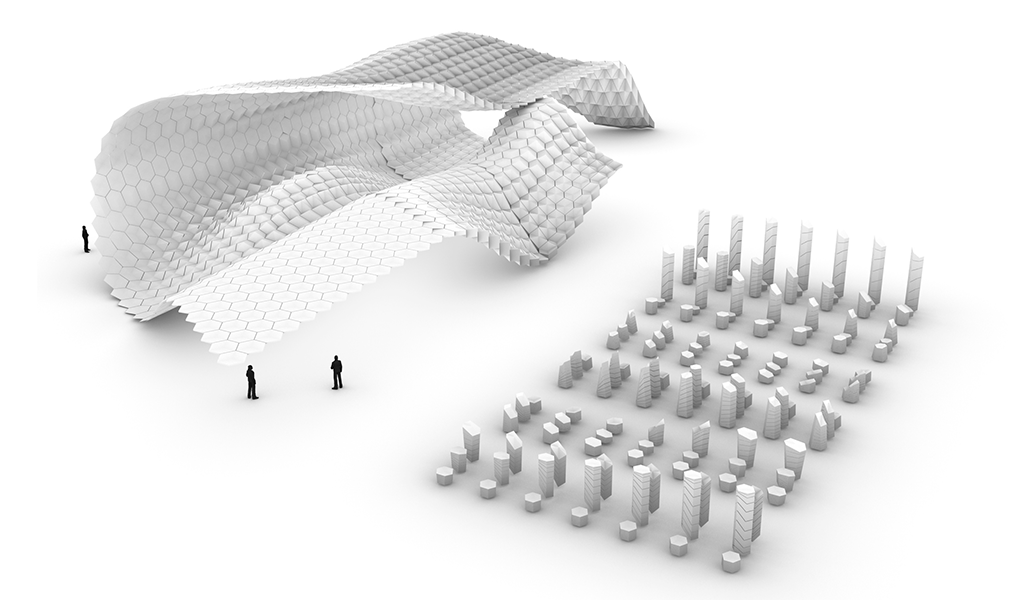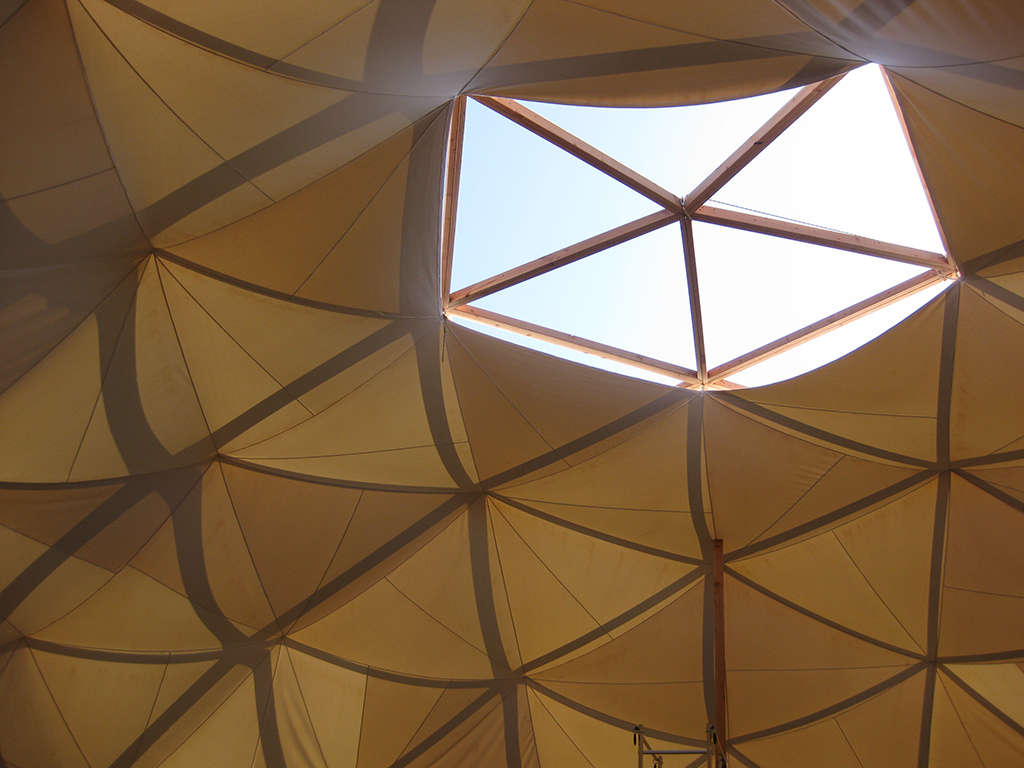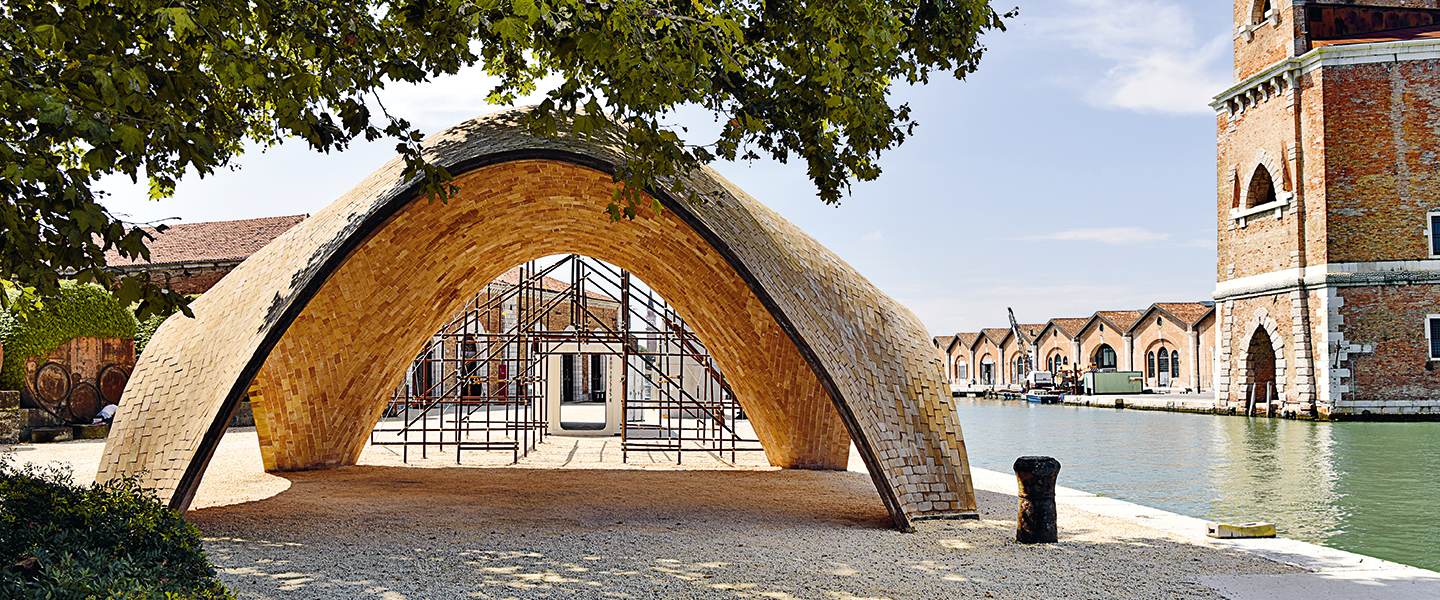CASTonCAST project, Pavilion (tower and surface), 2011.
Lluis Enrique, on making complex things simple
In 2011 and 2012, a research project conducted by a team of students (Povilas Cepaitis, Lluis Enrique, Diego Ordoñez and Carlos Piles) from the AA School of Architecture in London received the LafargeHolcim “Next Generation” 1st prize for Europe as well as the Global LafargeHolcim Innovation 3rd prize. Their project, CASTonCAST: Efficient fabrication system for geometrically complex building elements, aimed to create a smart but simple methodology to design and prefabricate building elements with complex geometries that is both resource-efficient and considerably reduces construction waste.
As the 5th LafargeHolcim Awards competition is getting closer, AA continues its series of interviews with a selection of prize-winners. Lluis Enrique answered our questions and told us more about his research and the impact of the Award on his work.
AA. Could you describe the project you submitted to the LafargeHolcim Foundation for sustainable construction for which you won an Award? What is the current status of this project?
Lluis Enrique. The CASTonCAST system consists in producing architectural freeform shapes from precast stackable components. The system is composed of two complementary parts: a novel manufacturing technique of precast building components which relies on producing a series of components in stacks and a new geometric method for the design of freeform shapes by means of stackable solid tiles.
The system presents advantages in all the realization phases. First, since the components are produced in stacks, each component is used as a mould for the next component. This, therefore, eliminates the need of costly complex moulds. Secondly, the method allows transporting the components to the construction site in stacks. This avoids the need to manufacture supporting structures for each component. Finally, the labour at the construction site consists in placing the components on a reusable scaffolding and assembling them. This increases the speed of erection and reduces the construction costs.
The project presented in 2011 for the International LafargeHolcim Awards was the result of a master thesis at the Architectural Association School of Architecture and it was at a conceptual phase. During the last years, I have continued the project in a PhD thesis at the chair of structural design lead by Prof. Dr. Joseph Schwartz at ETH Zürich. This investigation studies the integration of structural concerns in the research project for the design of freeform shell structures from precast stackable components. For this, first the assembly of the components has been studied, and then, a method for integrating structural constraints directly in the geometric modelling process has been developed, which ensures that the modelled freeform shells fulfil both fabrication and structural requirements. Some of these results have recently been presented in Advances in Architectural Geometry (AAG) 2016 in Zürich.
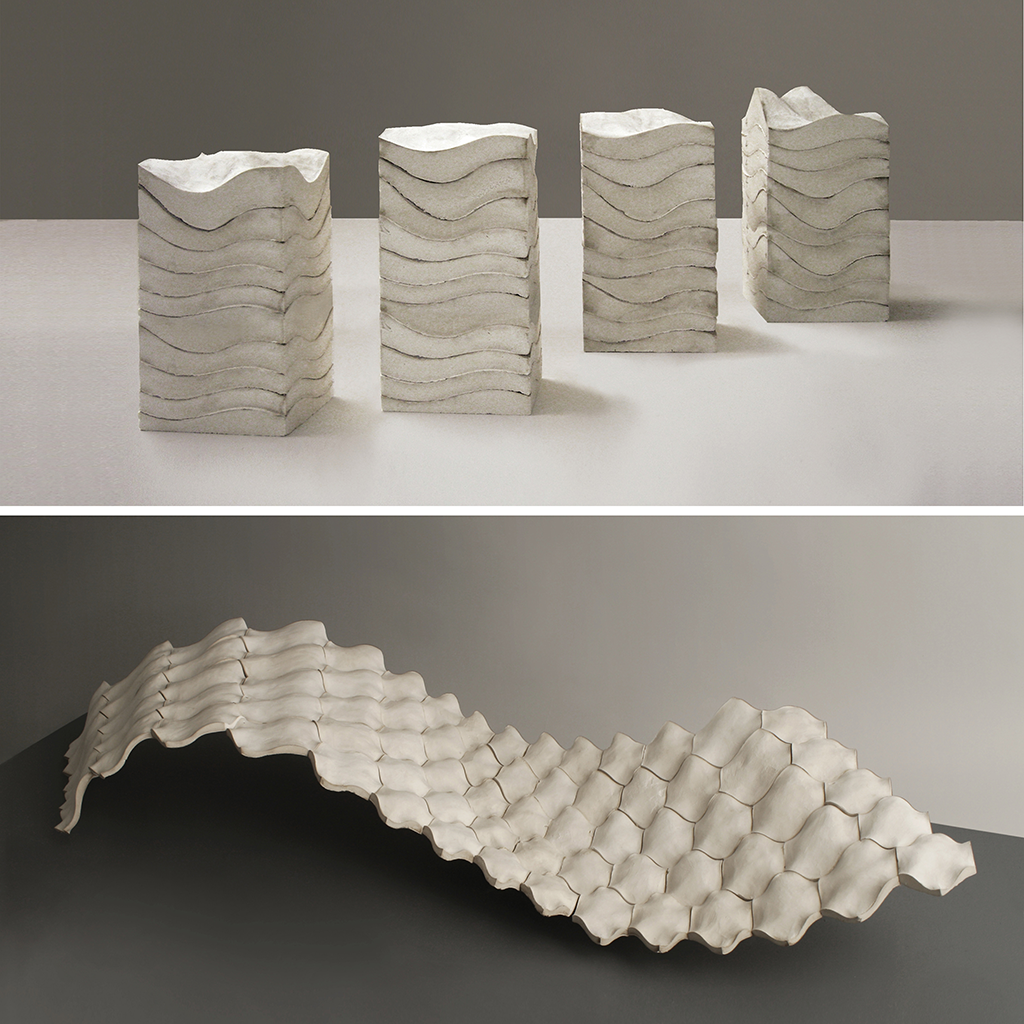
AA. What was the impact of these Awards on your professional activity as an architect?
Lluis Enrique. The Awards we obtained from LafargeHolcim Foundation for Sustainable Construction were surely one important factor that pushed me to continue the research project in a doctoral thesis at the ETH Zürich. Additionally, the competition made our project public, which helped us to present it in several cutting-edge schools such in The Institute for Advanced Architecture of Catalonia (IAAC).
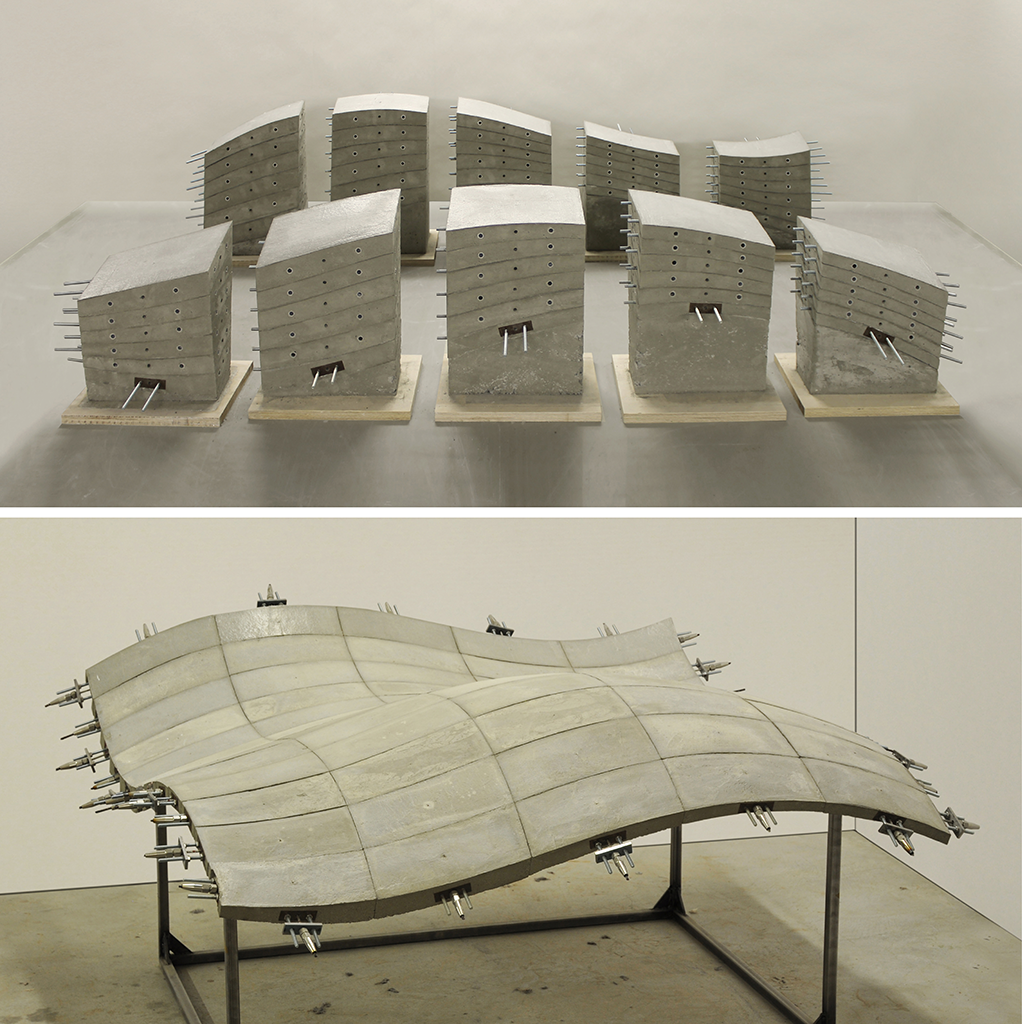
AA. What are your main current projects? Are you still in touch with the LafargeHolcim Foundation’s network and/or other Award-winners? If so, in what context?
Lluis Enrique. I am currently researching in diverse projects that combine architectural geometry, structure and realization such as intuitive methods for the design of shell and spatial structures and the realization of shell structures in an efficient manner. The research motivation is always to find ways to make complex things simple.
I am in touch with Carlos Espina, Senior Vice President of Research & Development of LafargeHolcim. Furthermore, working at the Institute of Technology in Architecture (ITA) of the ETH Zürich, I had the opportunity to meet Philippe Block, Professor of Architecture and Structure and member of the Academic Committee (AC) of the LafargeHolcim Foundation for Sustainable Construction, and also the award-winners Gramazio & Kohler and some of the researchers in their group such as architect Ammar Mirjan. In addition, I am in contact with Marta Malé-Alemany, Head Lecturer Digital Production at Hogeschool in Amsterdam.
To know more about Lluis Enrique’s research at ETH Zürich:
http://www.schwartz.arch.ethz.ch/Team/lluisenrique.php?lan=en
To find out more about the LafargeHolcim Foundation: https://www.lafargeholcim-foundation.org
Final call! You have until March 21st to submit your project for the 5th edition of the International LafargeHolcim Awards. All information and details are available here.

